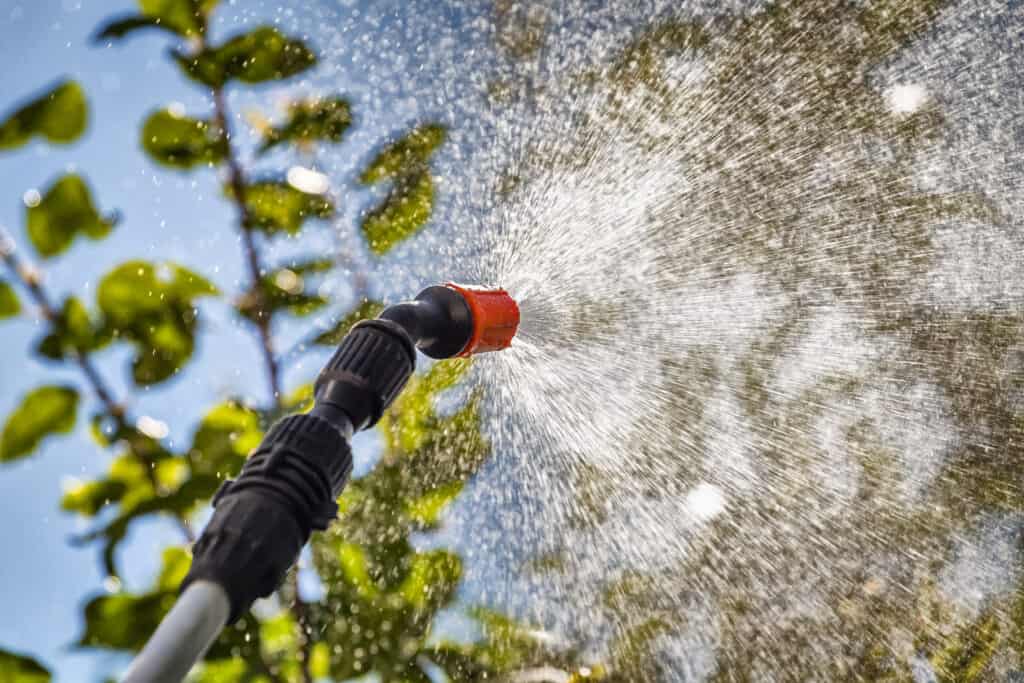These bonds prevent PFAS from breaking down fully in the environment. PFAS also gather in the bodies of living organisms. They build up in living things over time and pass through the food chain. This means that large animals with long lifespans (like humans) are vulnerable.
The EPA recently lowered its Health Advisory level for PFAS by over 1000 times, where minimal exposure can cause:
- Liver and kidney damage
- Suppressed immune system
- Decreased vaccine response
- Developmental disorders
- Cancer
- Premature death
Make a difference in the lives of yourself and your family!
Consumer Products
The bonds in PFAS chemicals make them very stable and give products properties such as water-, heat- and stain-resistance. These properties are very desirable to industry. Because of this, they were used in just about everything after they were first made in the 1940s. Some products that may contain PFAS are:
- non-stick cookware
- water/sweatproof clothing
- stain-resistant carpets and upholstery
- water-proofing sprays
- grease-proof food packaging
- cosmetics
How are we Exposed to PFAS?
PFAS contamination of drinking water throughout the United States is a common issue that is becoming more recognized. According to the Environmental Working Group, more than 200 million Americans likely have tap water contaminated by PFAS chemicals. In June of 2022, the U.S. Environmental Protection Agency (EPA) lowered the Health Advisory Levels (HAL) of two distinct PFAS chemicals: PFOS and PFOA. These two chemicals are long-chain PFAS known to be linked to many negative health effects. The HAL was lowered from a combined level of 70 parts per trillion (ppt) to 0.004 ppt for PFOA and 0.02 ppt for PFOS. While this is a great step forward, it is still not an enforceable regulation.
What Should I do if my Water is Contaminated?
Use a multi-stage ion exchange or reverse osmosis filtration system. Our go-to filter is the Zero Water pitcher, which comes with a Total Dissolved Solids (TDS) meter, so you know when you need to replace your filter! Brita filters are only one layer made of Granulated Activated Carbon (GAC). They are not as effective at removing PFAS, but they are better than no filter. DO NOT drink or cook with contaminated water! Boiling your water will NOT remove PFAS. Unlike some other contaminants, PFAS will not evaporate from your water when it boils. This is one reason this class of chemicals is so dangerous to our health. Bathe and shower with caution. Exposure through the skin is slower than consumption BUT is still harmful If you know your water has been polluted with PFAS, use alternative sites if possible.
How to Avoid PFAS in Every Day Products:
Avoid products with “fluoro” ingredients listed on the label.
Choose cookware without non-stick coatings, such as cast iron, stainless steel, or ceramic.
Avoid cosmetics with PTFE (polytetrafluoroethylene), perfluorooctyl triethoxysilane, perfluorononyl dimethicone, perfluorodecalin, and perfluorohexane.
Eat fresh food more to avoid take out & other food packaging with grease-resistant coatings.
Use resources to check that your cosmetics and personal care items are "clean" and free of PFAS. Some of our trusted resources include:
- EWG's Skin Deep Database
- Silent Spring Institute Detox Me App
- ClearYa Google Chrome Extension and Mobile App
Additional Resources
Other partner organizations have compiled useful resources to address the threat of PFAS in the built environment.

Occupational Exposure
Did you know firefighters have a 9% higher risk of developing cancer, in part due to exposure to firefighting foams and turnout gear containing PFAS? Per- and polyfluoroalkyl substances (PFAS) are considered “forever chemicals” in the body. Studies find “unequivocal evidence that firefighters using aqueous film-forming foams (AFFF) have unacceptably elevated blood levels of [multiple types of PFAS]” – which can lead to cancer.
PFAS hides in firefighting gear, including firefighting foam, turnout gear & PPE, and contaminated vehicles, materials, and stations.
WHE acknowledges and respects that firefighters accept big risks when working on the front lines every day – which is why they shouldn’t have to accept even more by being exposed to PFAS every day.
A few things you can do to support Pennsylvania’s firefighters:
- Contact your legislator and advocate for fluorine-free alternatives.
- Support a PA AFFF Take Back Program
